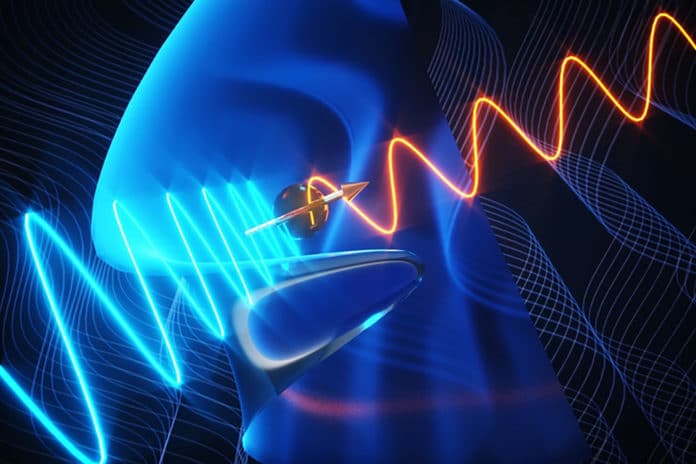The observation of the Higgs boson solidified the standard model of particle physics. However, explanations of anomalies such as dark matter are based on further symmetry breaking, calling for an undiscovered axial Higgs mode.
An interdisciplinary team led by Boston College physicists has discovered a new particle – or previously undetectable quantum excitation – known as the axial Higgs mode, a magnetic relative of the mass-defining Higgs Boson particle. Unlike its parent, axial Higgs mode has a magnetic moment. It requires a more complex form of theory to explain its properties.
Boston College Professor of Physics Kenneth Burch, a lead co-author of the report, said, “Theories that predicted the existence of such a mode have been invoked to explain dark matter.”
Scientists focused on a well-studied quantum material called RTe3, or rare-earth telluride, in a tabletop experimental format. The materials’ properties mimic the theory that produces the axial Higgs mode. However, the challenging task is to finding Higgs particles, in general, is their weak coupling to experimental probes, such as beams of light.
Burch said, “Revealing the subtle quantum properties of particles usually requires rather complex experimental setups including enormous magnets and high-powered lasers while cooling samples to extremely cold temperatures.”
Scientists overcame these challenges by using a light scattering technique and the proper choice of a quantum simulator, essentially a material mimicking the desired properties for study. They mainly focused on a compound long known to possess a “charge density wave,” namely a state where electrons self-organize with a periodic density in space.
Burch said, “The fundamental theory of this wave mimics components of the standard model of particle physics. However, in this case, the charge density wave (CDW) is quite special.”
The CDW originates far above room temperature and involves modulation of the charge density and the atomic orbits. This allows the Higgs Boson associated with this charge density wave to have additional components, namely, it could be axial, meaning it contains angular momentum.
Leter, scientists used light scattering to determine the subtle nature of this model. They shone a laser on the material. The change in color results from the light creating the Higgs Boson in the material, while the polarization is sensitive to the symmetry components of the particle.
Also, scientists could create the particle with different components thanks to the proper choice of the incident and outgoing polarization – such as one absent magnetism or a component pointing up. Using a fundamental aspect of quantum mechanics, they used the fact that for one configuration, these components cancel. However, for a different configuration.
Burch said, “As such, we were able to reveal the hidden magnetic component and prove the discovery of the first axial Higgs mode.”
“The detection of the axial Higgs was predicted in high-energy particle physics to explain dark matter. However, it has never been observed. Its appearance in a condensed matter system was completely surprising and heralds the discovery of a new broken symmetry state that had not been predicted. Unlike the extreme conditions typically required to observe new particles, this was done at room temperature in a tabletop experiment where we achieve quantum control of the mode by just changing the polarization of light.”
Burch said, “the seemingly accessible and straightforward experimental techniques deployed by the team can be applied to study in other areas.”
“Many of these experiments were performed by an undergraduate in my lab. The approach can be straightforwardly applied to the quantum properties of numerous collective phenomena, including modes in superconductors, magnets, ferroelectrics, and charge density waves. Furthermore, we bring the study of quantum interference in materials with correlated and/or topological phases to room temperature overcoming the difficulty of extreme experimental conditions.”
Journal Reference:
- Wang, Y., Petrides, I., McNamara, G. et al. Axial Higgs mode detected by quantum pathway interference in RTe3. Nature (2022). DOI: 10.1038/s41586-022-04746-6
